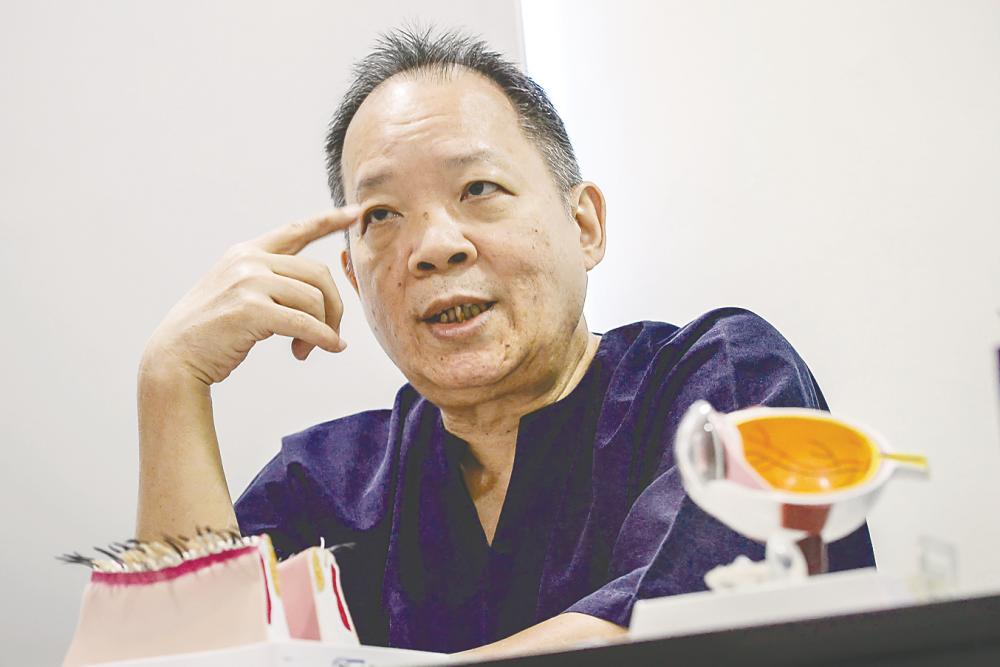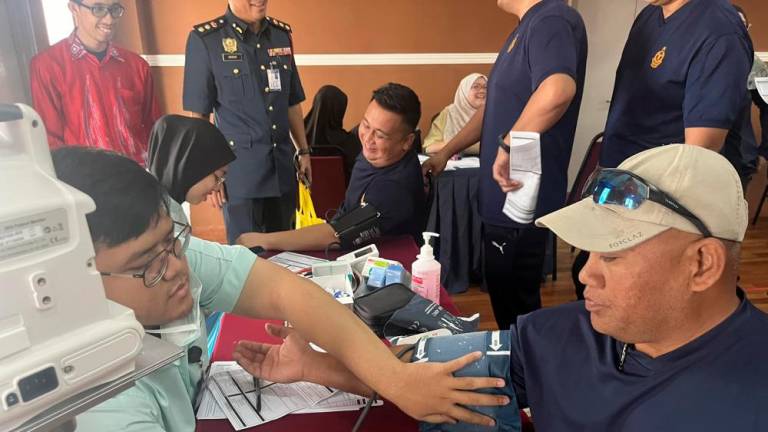DRY eye disease (DED) happens when the surface of your eye a.k.a ocular surface becomes excessively dry.
It affects ages ranging on both ends of the spectrum, and while ageing is an inevitable cause, modern-day lifestyle like exposure to constant air conditioning and prolonged screen time means that younger people are likely to experience the disease sooner.
During a dry eye episode, typically felt more towards the end of the day, especially after staring at your computer for work or lunch breaks on your smartphone, you might feel your eyes becoming tired, itchy, and red.
The symptoms are variable, specific to each individual, where some might even complain of a headache or burning sensation in the eyes, often interfering with work and productivity.
“There are a lot of variations in the way a patient describes dry eyes,” said chief consultant ophthalmologist, cataract, & refractive surgeon at VISTA Eye Specialist Dr Aloysius Joseph Low in a recent interview.
“That’s why a thorough examination is needed. We must listen to the patient,” he said adding that some might experience tearing as a result of the eyes responding to dryness, and may not associate it with DED.
It is usually accompanied by some sort of inflammation in the eye, like another component called blepharitis, which affects the eyelid margin.
“When you have dry eye disease, you can also have conjunctivitis associated with it or blepharitis, inflammation of the eyelid, so it’s a very big subject.
Coated with a layer of tears, the ocular surface is never completely dry, says Dr Low, and will result in dry eyes when the layer becomes deficient, determined after a series of tests.
Dry eyes can also be due to decreased tear production but that is usually when natural tear ducts have undergone autoimmune diseases like rheumatoid arthritis or diabetes.
However, excessive evaporation of tears is the most common cause of dry eyes says the doctor.
According to Dr Low: “When we stay focused on the computer or our smartphone, we tend to focus, you see, so we don’t blink as often. Like now, I’m talking to you, we are blinking at about 18 to 20 times per minute.
He added: “Whereas if we are focusing on something near, we tend to blink only at about nine times per minute.
“Each time we blink, we’re actually wetting the surface of our eye. Imagine now, here we are blinking less, so the ocular surface tends to become dry,” explained the doctor.
Dr Low stresses that while it is virtually impossible to avoid screen time due to work, getting enough sleep, and reducing stress can help.
“If you can get seven hours, it’s good enough but most of the time, we don’t. So even in the afternoon, if you have the luxury to even close your eyes and doze off for half an hour, it’s still helping.”
There is no real cure, but medication in the form of eye drops and eye gels, as well as proper hygiene, can help make life easier.
The eye drops contain artificial tears comprising ingredients found in natural tears like proteins, antibodies, minerals, and water, and comes bottled or in a single dose, snap-off plastic vials.
The latter is made without preservatives, hence will only last you a day once opened. “You can’t go and keep it for one week, and then take it out, because there are no preservatives, it can get contaminated.
Even with preservatives, bottled eye drops should be discarded after opened for about a month.
On top of medication, Dr Low says not to forget “supplementation and diet under the broad heading of treatment,” noting that omega 3, particularly from small fish – like sardines and mackerel – is good for dry eyes.
“Omega 3 derived from flaxseed is also good.”
Along the eyelid margin lies an opening of glands – 35 on the lower lid and 25 on the upper lid – which naturally secretes oil, and helps prevent excessive evaporation of the tears.
When the glands are unhealthy, the oil produced “becomes thick like butter,” rather than a thin healthy consistency, which causes blockage in the openings.
Dr Low said: “Basically, the oil that naturally comes out and sort of coats the surface, is absent, right, so our tears start to evaporate very fast. So that’s how we get dry eyes.
There are procedures which can be done every six months to a year or depending circumstances of each patient.
Microblerapho exfoliation gets rid of dead and devitalised cells on the eyelid margin and eyelid, while Intense Pulse Light (IPL) is used to stimulate glands into producing healthy oils.
“Let me give you an analogy,” Dr Low said. “It’s like when we go for scaling of our teeth – six months, once a year – but every day, we still have to brush our teeth, right?”









